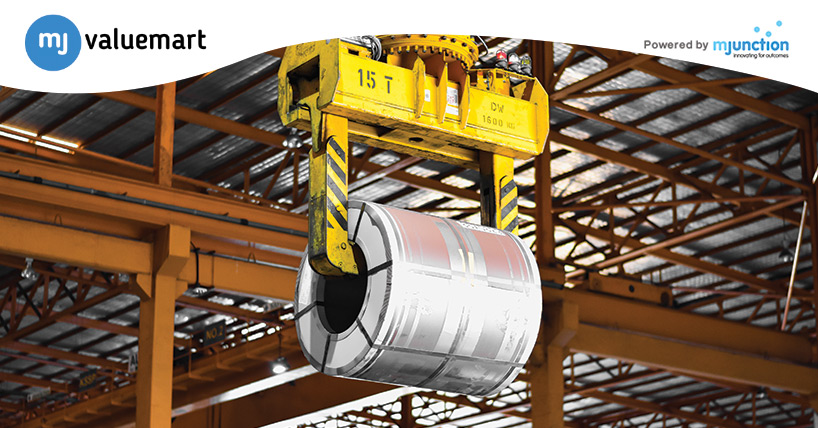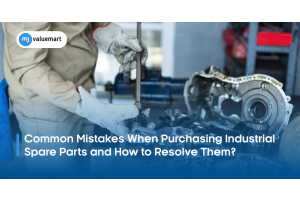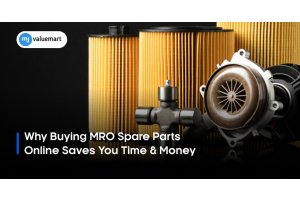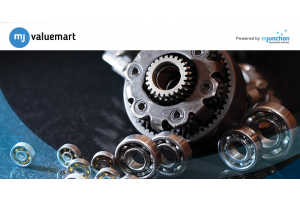Useful insights on classification of MRO spare parts

MRO spare parts play an important role in maintaining the uninterrupted functioning of machinery and equipment. Proper classification of these spares is crucial for efficient inventory management, streamlined procurement processes, and enhanced maintenance efficiency. Miscategorising spares can lead to inefficiencies and increased downtime for an organisation. If you are looking for information on classification of MRO spares, here is a useful read:
1. Consumable spare parts: Consumable parts are integrated within the equipment and are typically replaced rather than repaired in the event of a failure. Usually, it’s more cost-efficient to replace such parts rather than trying to repair them.
Listed below are some of the common consumable spares:
a. Batteries - Batteries are widely used in various applications such as backup power systems, emergency lighting, and portable equipment. They need to be periodically replaced as they wear out or lose their ability to hold a charge effectively. Having consumable spare batteries readily available is indeed crucial to ensure uninterrupted power supply and reliable operation of battery-powered devices.
b. Filters - Filters are widely used in HVAC systems, hydraulic systems, air compressors, and machinery to remove impurities and contaminants from air, fluids, or gases. Common types of filters include air filters, oil filters, fuel filters, and hydraulic filters. These filters play a critical role in maintaining optimal performance and preventing system failures by ensuring that the air, fluids, or gases flowing through the system are clean and free from contaminants. Due to their function, filters do require regular replacement as they become clogged or reach the end of their service life.
c. Bearings - Bearings are used for reducing friction and support rotating or linear motion in machinery and equipment. They are subjected to constant wear and tear and require regular replacement.
d. Bulbs - In lighting systems, bulbs and lamps are consumable spare parts with a limited lifespan. It is necessary to regularly replace these components to maintain proper lighting levels and prevent unexpected failures or reduced illumination.
e. Chains and belts - Belts and chains are used for power transmission in various applications, such as conveyors, pumps, and motors. They are prone to wear, stretching, and damage over time. Keeping spare belts and chains on hand allows for immediate replacement and prevents prolonged equipment downtime.
Reliable industrial MRO suppliers can assist in meeting your procurement requirements for consumable spare parts. By partnering with reliable suppliers, you can ensure a steady and consistent supply of these essential components. These suppliers understand the importance of consumable spare parts and can provide the necessary expertise and support to fulfil your procurement needs efficiently.
2. Repairable spare parts: Repairable spare parts are components that can be repaired and restored to working condition after experiencing failures caused by factors such as wear and tear, damage, or corrosion. Unlike consumable parts, which are typically replaced when they fail, repairable parts can be repaired rather than replaced entirely. Repairing these parts is often a preferred option as it is generally more cost-effective compared to purchasing new replacements. By opting for repair instead of replacement, organisations can save on costs while still maintaining the functionality and performance of equipment and machinery.
Listed below are some of the common repairable spares:
a. Pumps and motors - Electric motors, pumps and their components can often be repaired or rebuilt to extend their operational life instead of being completely replaced.
b. Circuit boards - Circuit boards, integrated circuits, and other electronic components can be repaired or replaced individually instead of replacing the entire equipment.
c. Valves and actuators - Valves, control valves and actuators used in fluid systems can often be repaired or reconditioned to fix performance issues.
d. Transformers - Replacing a transformer can be expensive. But the good news is that often, problems with transformers can be fixed through repairs instead of buying a new one. This can save money and help keep operations running smoothly.
e. Control panels - Control panels, switchgear, and their components can undergo repair or refurbishment to address issues and ensure proper control and protection.
Proper classification allows organisations to gain a clear understanding of the types and quantities of spares they have in stock. It also provides clarity on the specific requirements and specifications of different types of spares. Furthermore, it helps in planning maintenance activities by identifying critical spares that are prone to failure or require frequent replacements.





